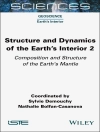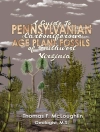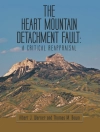Continuing the tradition of International Dyke Conference, this book is largely based on contributions from the IDC7 but also includes some chapters by invitation. It focuses on mafic dyke swarms and related associations: e.g. links with sills, kimberlites, syenites, carbonatites, and volcanics, discussing the following themes: (i) regional maps/reviews of dyke swarms and related units, (ii) the role of giant dyke swarms in the reconstruction of supercontinents/paleocontinents, (iii) mapping of dykes using remote sensing techniques, (iv) geochronology of dyke swarms, (v) petrology, geochemistry and petrogenesis of dykes, (vi) emplacement mechanism of dykes, (vii) dyke swarms and planetary bodies, and (viii) links to mineralization and resources.
Daftar Isi
Early Cretaceous Giant Dyke Swarm in the eonatorial Brazilian Margin: Geodynamic Implications for the West Gondwana Breakup.- Mafic Dyke Swarms of the Sao Francisco Craton, Brazil and their Tectonic Significance.- Mapping the dyke swarms of the Indian shield .- U-Pb SHRIMP-Ⅱ Baddeleyite and zircon dating of the Early Proterozoic Monchegorsk layered mafic-ultramafic complex (Kola Peninsula): Evidence of synchronous magmatism.- A mechanical perspective on lateral dike propagation.- Dolerite dyke swarms of Southern Africa, including the Kalahari Craton and surrounding blocks and orogens.- Dolerite dyke swarms of Southern Africa.- Breakup of the East Gondwana and formation of mafic dike swarm in the Tethyan Himalaya, Southern Tibet.- Mafic dyke swarms of Africa.- Dykes of the central Australia.- Sheeted dikes in oceanic crust.- Dykes in North Atlantic craton.- Dyke swarm: a key for understanding behavior of supercontinent .- Emplacement of dyke swarm and Cretaceous volcanism in Peninsula India .- Recent developments In geochronology and paleomagnetic study of ‘Newer .- Dolerite dykes’of Singhbhum craton:implications to the stratigraphy of Singhbhum craton and to the paleogeographic position of India during Neoarchean-paleoproterozoic.- Mafic dyke swarms in Amazonia craton: a review and global tectonic.- Dolerite dyke swarms of Southern Africa.- Global Dyke Swarm Summary Geochemical characteristics of Proterozoic mafic dykes from the Bomdila Group of Rocks, NE Lesser Himalaya, India.- Evolution of carbonatite dikes in Amba Dongar Diatreme.- The magmatic evolution process of early Cretaceous Comei-Bunbary Large Igneous Province-Insights from dike swarm in Tethyan Himalaya.- Geochemical constraints and tectonic significance of the mafic dykes in Bhavani shear zone, South India.- Geochemistry and petrogenesis of the Proterozoic mafic intrusive rocks from the Central Crystallines of the western Arunachal Himalaya, India.- Petrogenesis of mafic dyke in Early Mesoproterozoic Nakerikallu granite; NE fringes of Nallamalai Fold Belt, Eastern Dharwar Craton, SE India.- Petrography and geochemistry of new finding alkaline lamprophyre dyke in eastern margin of the Eastern Dharwar Craton, near Khammam, Telangana, India.- Semi-automatic extraction of dyke geometry and spatial distribution based on multi-source remote sensing images and Arc GIS techniques.- Petrography and Tectonic Setting of Dykes in the Granitoid Intrusive, South to East-Qorveh (Kurdistan Province), Iran.- Spatial and temporal distribution patterns of dyke swarms in Central Asia: Results from remote sensing interpretation and regional geology.- Paleoproterozoic mafic dyke swarms in the eastern part of the Karelian Craton dykes from West Africa.- Giant Circumferential Dyke Swarms on Earth: Possible Analogues of Coronae on Venus and Similar Features on Mars.- Petrology and Geochemistry of granitoid-hosting mafic dykes at Malanjkhand mine area, Central India.- Saucer-shaped dyke swarms from Tarim Basin as part of the Early Permian Tarim Flood Basalt Province.
Tentang Penulis
Prof. Rajesh K. Srivastava is a Professor of Geology at Banaras Hindu University. His specialization fields are Igneous Petrology, Geochemistry and Precambrian Geology, and his main interests are in:
i. Precambrian Mafic Igneous Complexes, particularly dyke swarms and associated volcanic rocks from the Bastar craton, Dharwar craton and Arunanchal Himalaya
ii. Ultramafic–Alkaline–Carbonatite Complexes of western, southern, and northeastern India
iii. Lamprophyres, lamproites, and kimberlites of the Mahakoshal supracrustal belt and Bastar craton (Central India), Damodar valley, East Gondwana (Eastern India), and Eastern Dharwar craton, and
iv. the Andaman Ophiolite suite
Prof. Richard Ernst is a Scientist in Residence at Carleton University, Ottawa, Canada and a Guest Professor at Tomsk State University (TSU), Siberia, Russia. His research is focused on all aspects of Large Igneous Provinces (LIPs) and links with mineral, metal and hydrocarbon resource exploration, supercontinent breakup, catastrophic environmental/climate change including mass extinction events, and planetary analogues. He is the author of Large Igneous Provinces, published in 2014 by Cambridge University Press.
Prof Peng Peng is currently working at the Institute of Geology and Geophysics, Chinese Academy of Sciences. He is a petrologist and geochemist interested in using mafic dyke swarms, greenstone belts and other associated records to reveal the forming and early evolution of the continental crust and the lithosphere, as well as the palaeogeography of Precambrian supercontinents.












